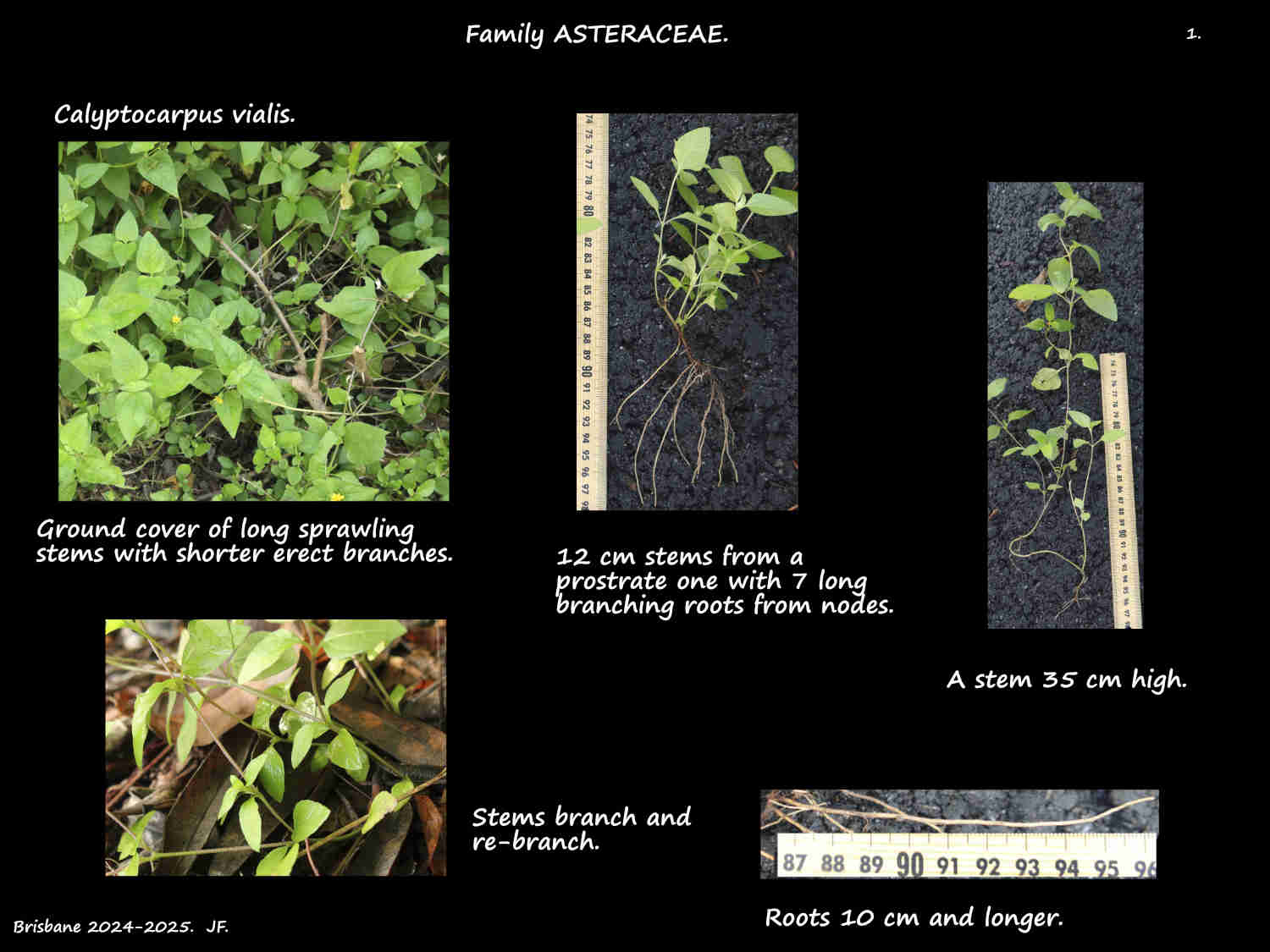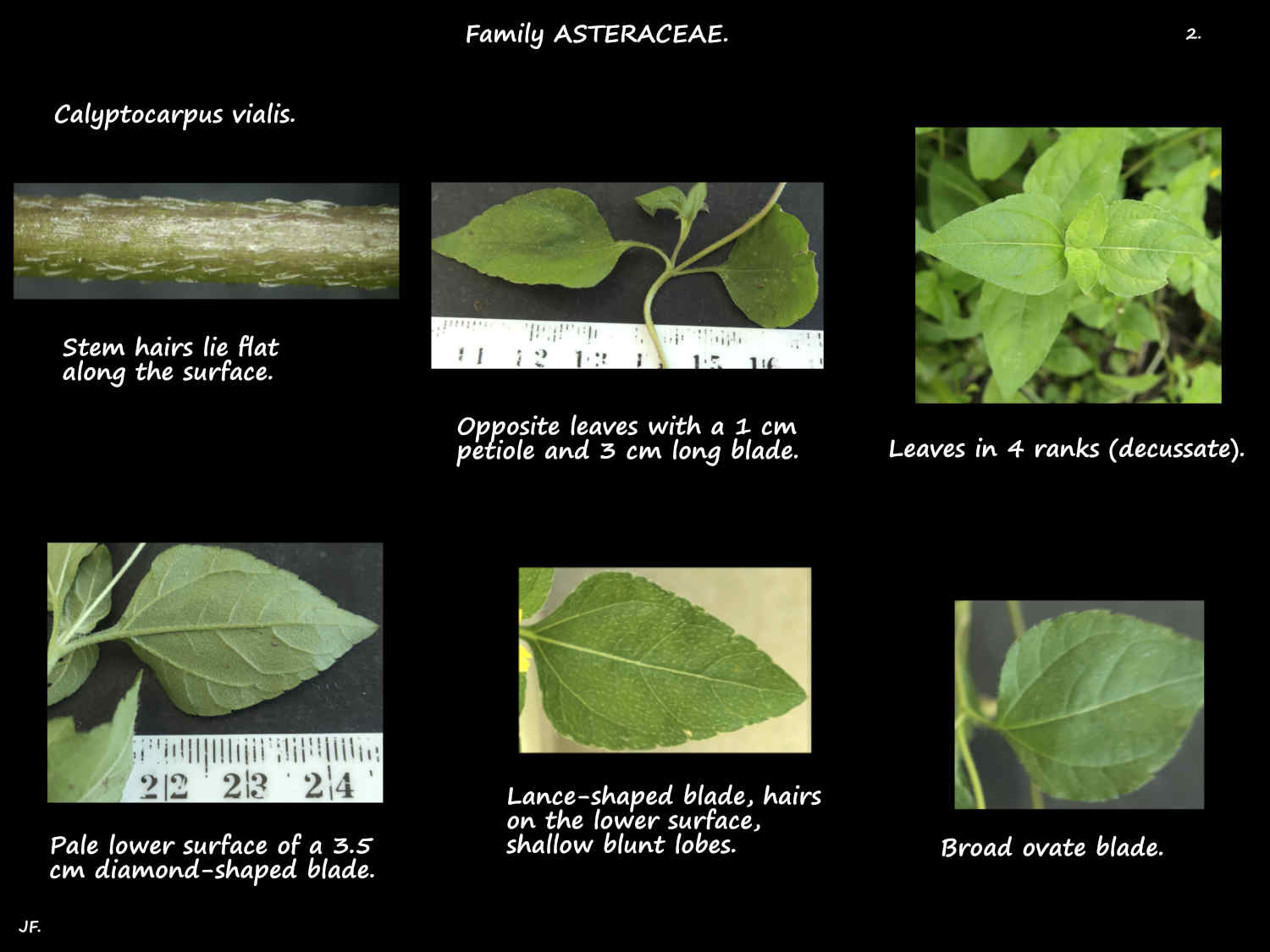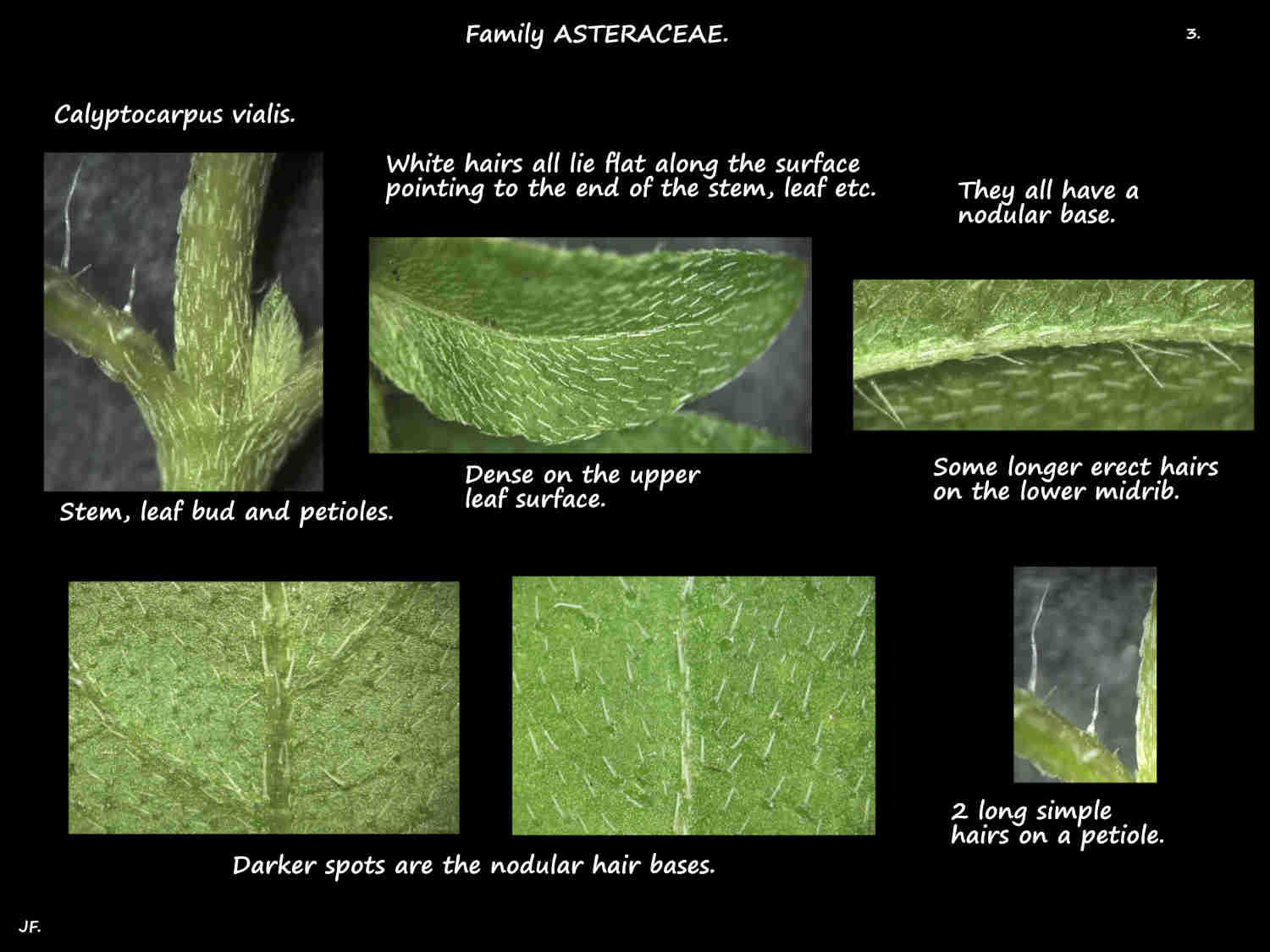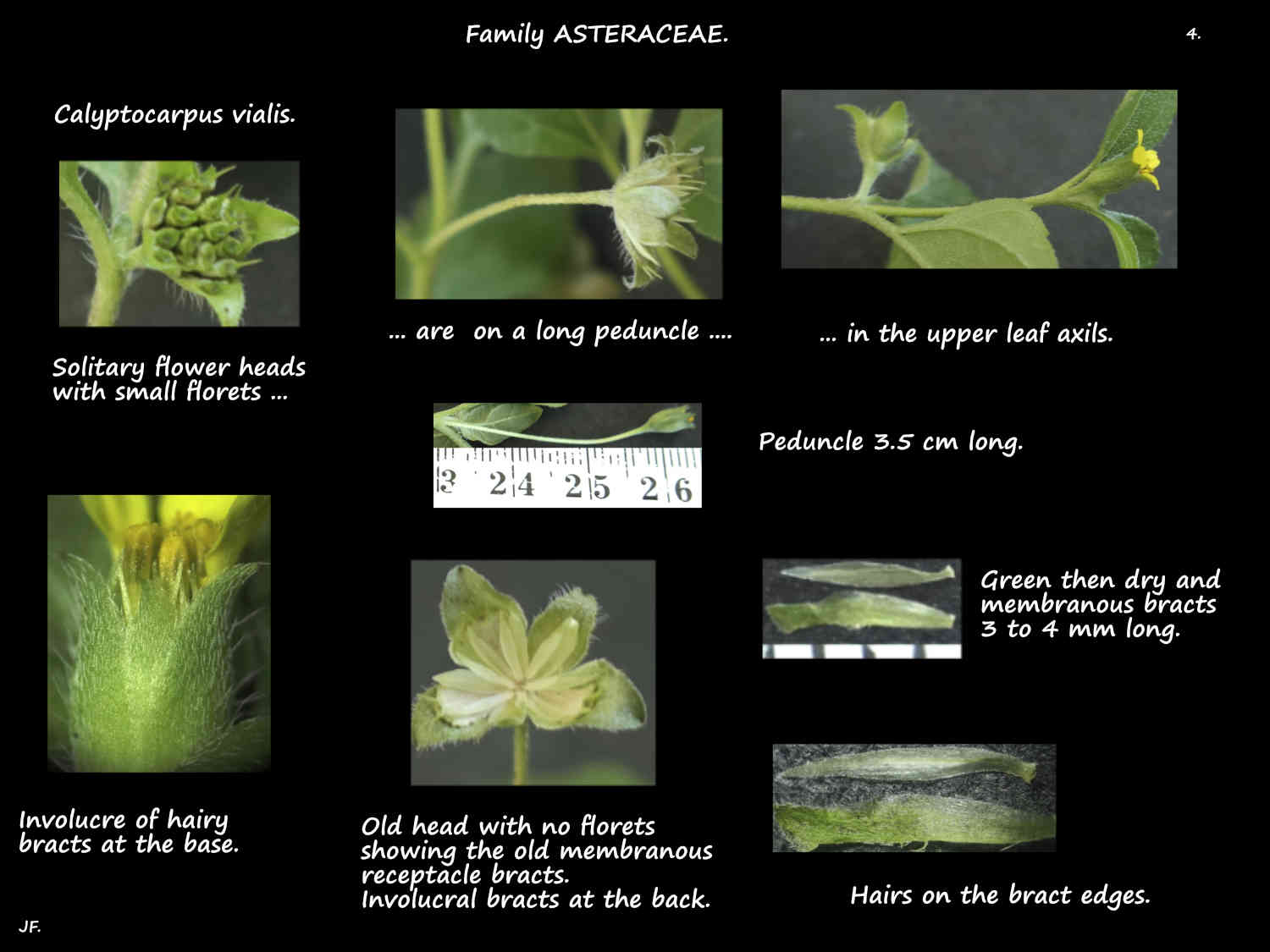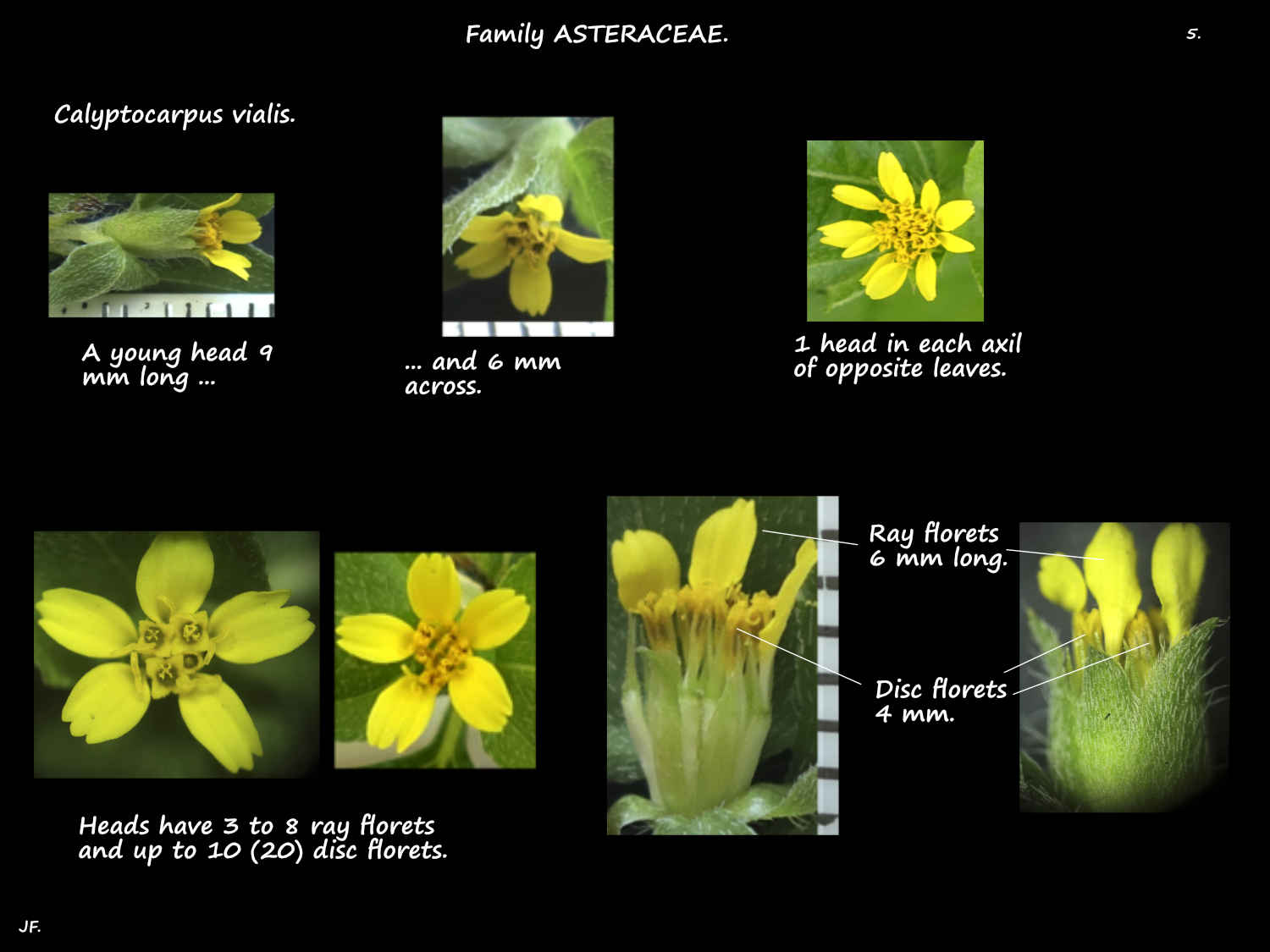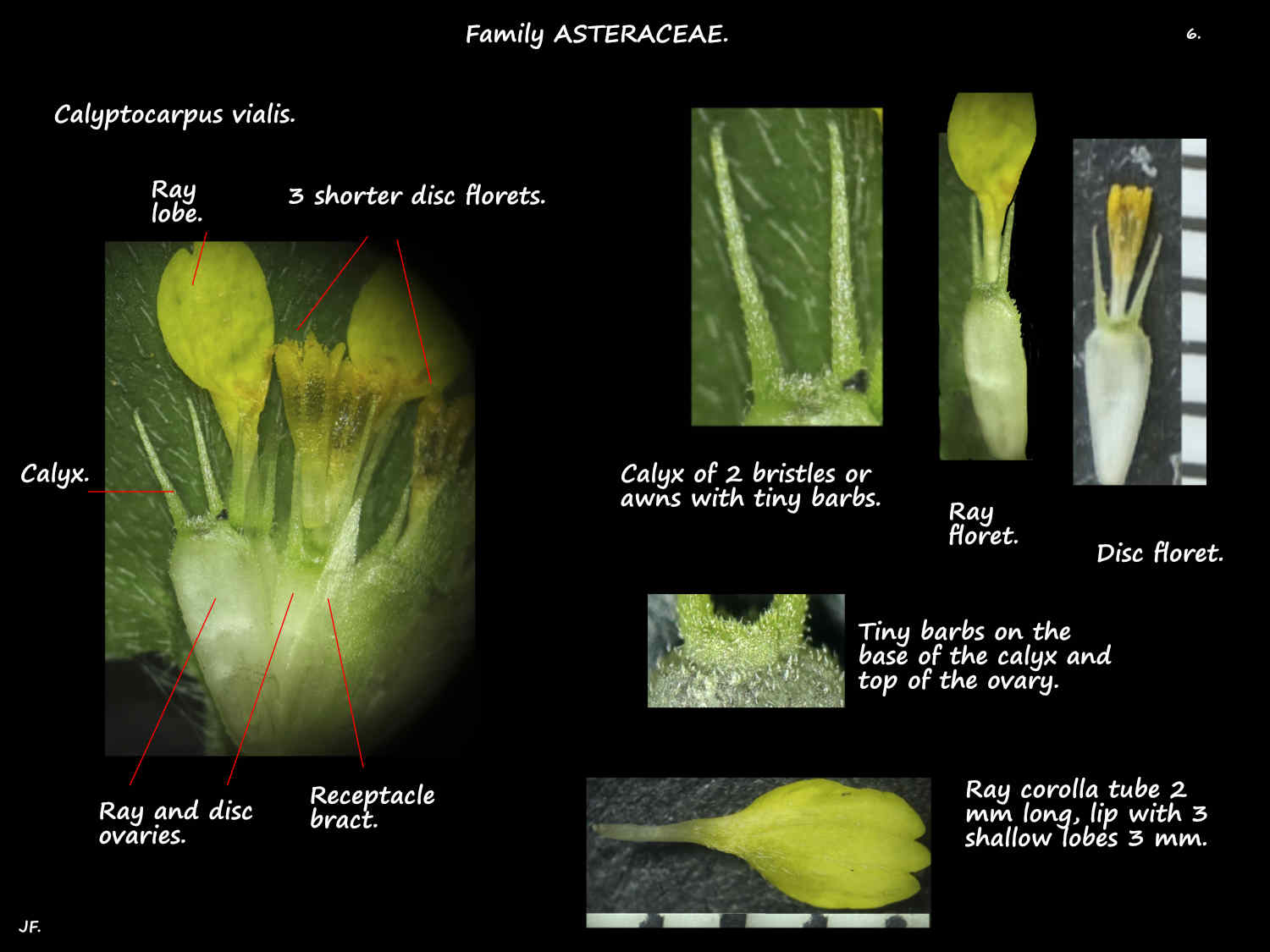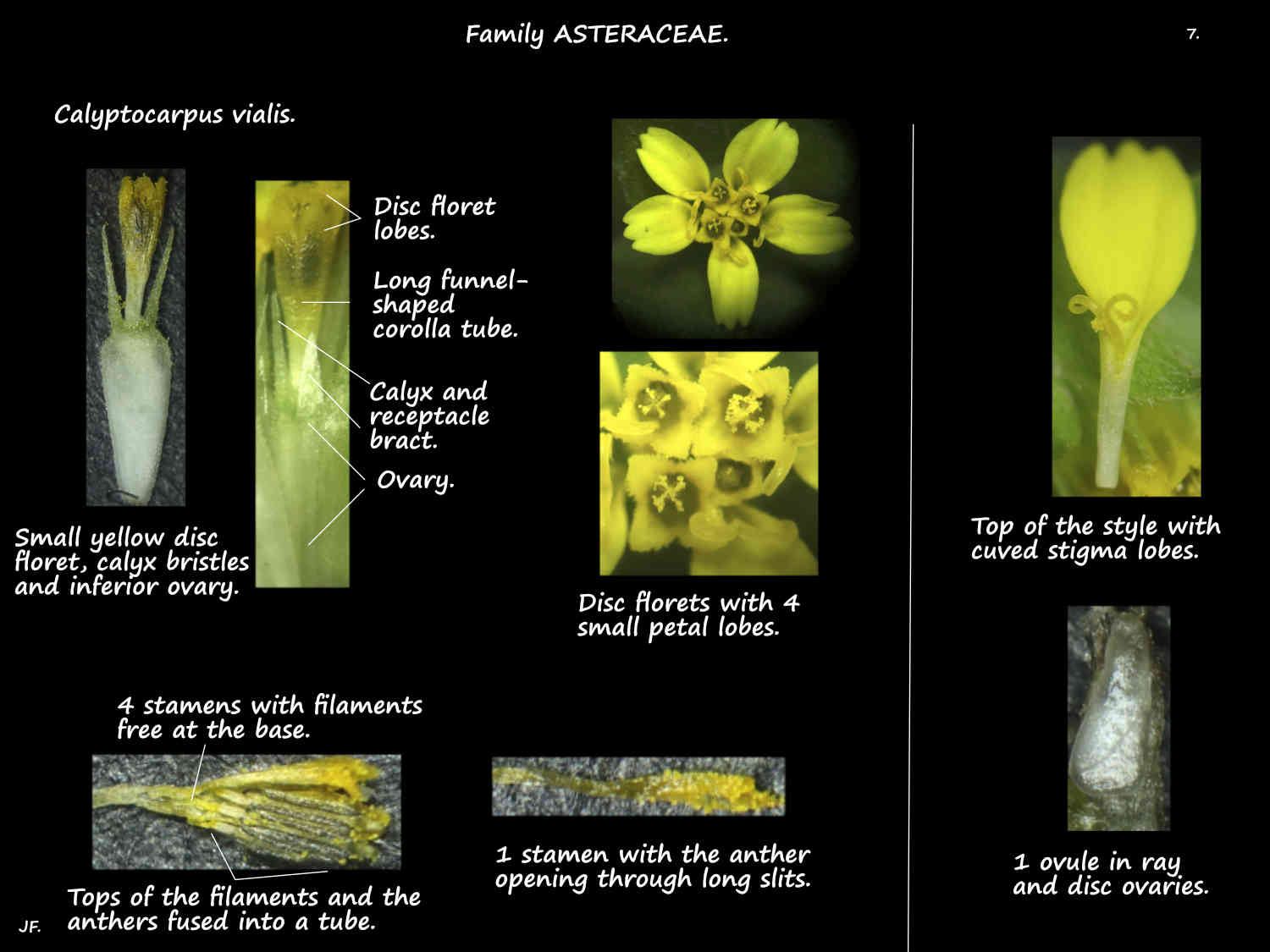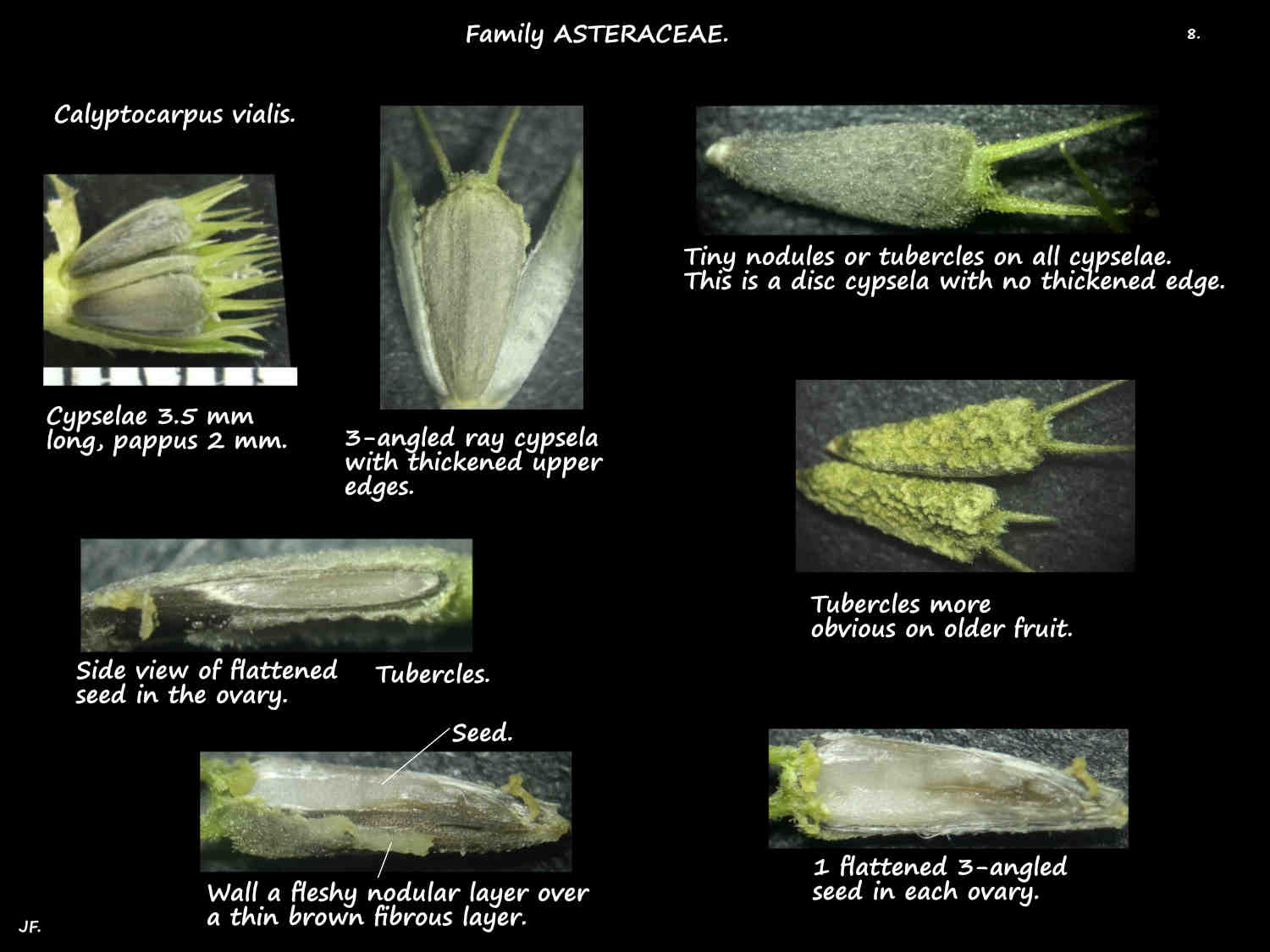Creeping Cinderella-weed is in Family Asteraceae.
Calyptocarpus vialis is the type species for the genus.
It is naturalised in S.E. Queensland and along the coast to the north.
Now a weed it is seen in lawns and on footpaths and waste ground.
The annual or perennial herbs have thin green then reddish stems.
Short stems are erect but longer ones, up to 60 cm are prostrate or trailing.
The prostrate stems may root at the nodes.
The branching stems have fairly dense hairs that lie along the surface.
Opposite leaves are on a hairy petiole up to 1.5 cm long.
The ovate, triangular or lance-shaped blades are up to 5 or 6 cm long and 3 to 4 cm wide.
The edge has small teeth that point to the blade tip.
Hairs on both leaf surfaces are like those on the stems.
Inflorescences are a single flower head in the upper leaf axils.
Up to 1 cm across the heads are on a long hairy peduncle.
At the base of the head is an involucre of 3, 4, or 5 hairy green bracts.
On the receptacle, at the base of each floret is a narrow membranous bract.
Pointed receptacle bracts, up to 1 cm long have a smooth or slightly feathered tip.
Heads have a ring of 3 to 8 yellow ray florets surrounding up to 20 disc florets.
The female ray florets have a calyx (pappus) of 2 barbed bristles around 2 mm long.
The corolla tube is around 2 mm long and its single lobe around 3 mm.
The tip of the bright yellow lobe is divided into 3 shallow lobes.
The inferior ovary, with 1 ovule has a 2 mm style with a yellow stigma.
The up to 10 (20) central disc florets, around 4 mm long are bisexual.
Their calyx is similar to that of the ray florets with 2 bristles.
The corolla tube has 5 equal lobes that are shorter than the tube.
The inner surface has dense papillae (small blunt projections).
The stamens, around 2 mm long have their filament ends and anthers joined forming a tube.
The 1 mm inferior ovary, with a single ovule has a 1 mm style.
Fruit are a cypsela often incorrectly called an achene which comes from a superior ovary.
The green then brown obconical cypselae are around 4 mm long.
At the top are the 2 spreading calyx bristles (awns, pappus).
There are usually some receptacle bracts around them.
Cypselae are flattened with 3 or 4 angles in cross section.
The surface is covered in tiny nodules (tuberculate) that are less obvious on the disc florets.
The angles of the ray cypselae are thickened near the tip but not winged (ray florets are not thickened).
Each has 1 flattened white seed.
J.F.

